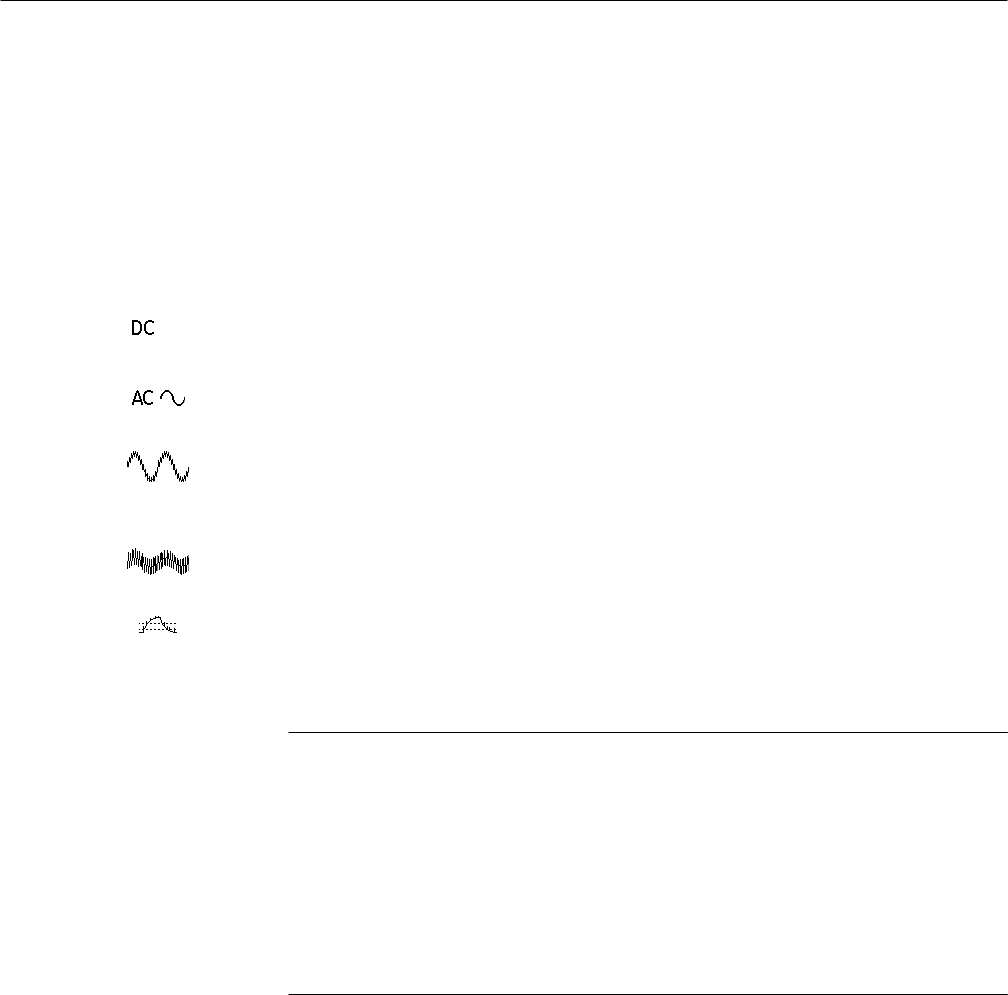
Triggering on Waveforms
3–74
TDS 500C, TDS 600B, & TDS 700C User Manual
To select which source you want for the trigger:
Press TRIGGER MENU ➞ Type (main) ➞ Edge (pop-up) ➞
Source (main) ➞ Ch1, Ch2, Ch3, Ch4, AC Line, or DC Aux (side).
To select the coupling you want, press TRIGGER MENU ➞ Type (main) ➞
Edge (pop-up) ➞ Coupling (main) ➞ DC, AC, HF Rej, LF Rej, or Noise Rej
(side).
DC passes all of the input signal. In other words, it passes both AC and DC
components to the trigger circuit.
AC passes only the alternating components of an input signal. It removes the DC
component from the trigger signal.
HF Rej removes the high frequency portion of the triggering signal. That allows
only the low frequency components to pass on to the triggering system to start an
acquisition. High frequency rejection attenuates signals above 30 kHz.
LF Rej removes the low frequency portion of the triggering signal. Low
frequency rejection attenuates signals below 80 kHz.
Noise Rej provides lower sensitivity. Noise Rej requires additional signal
amplitude for stable triggering, reducing the chance of falsely triggering on
noise.
NOTE. When you select Line as the trigger source, the oscilloscope uses AC
coupling to couple a sample of the AC line voltage to the trigger circuits.
Although trigger coupling can be set to other than AC when in Line, the
oscilloscope ignores the setting until another source (one of Ch1 through Ch4) is
selected.
In similar fashion, when you select DC Aux (Rear Panel) as the trigger source,
the oscilloscope uses DC coupling to couple an auxiliary signal to the trigger
circuits. Although trigger coupling can be set to other than DC when in DC Aux,
the oscilloscope ignores the setting until one of Ch1 through Ch4 is selected.
To Select a Source
To Specify Coupling
